If you ever felt frustrated with your car's air conditioning system not putting out enough cool air on a hot summer day, don't fret. It may be due to trapped air and moisture, along with unwanted contaminants. So, we asked the experts how to pull a vacuum on a car air conditioner.
According to professionals, the best way to pull a vacuum on your car's air conditioner is to use a vacuum pump. When it comes to using one, there are three main steps that one must remember.
- How to set the vacuum pump
- How to pull the vacuum
- Ensuring to close the vacuum
In this article, we will further discuss these steps in greater detail. What's more, we will also talk about the importance of pulling a vacuum in one's car air conditioner, as well as other related questions.
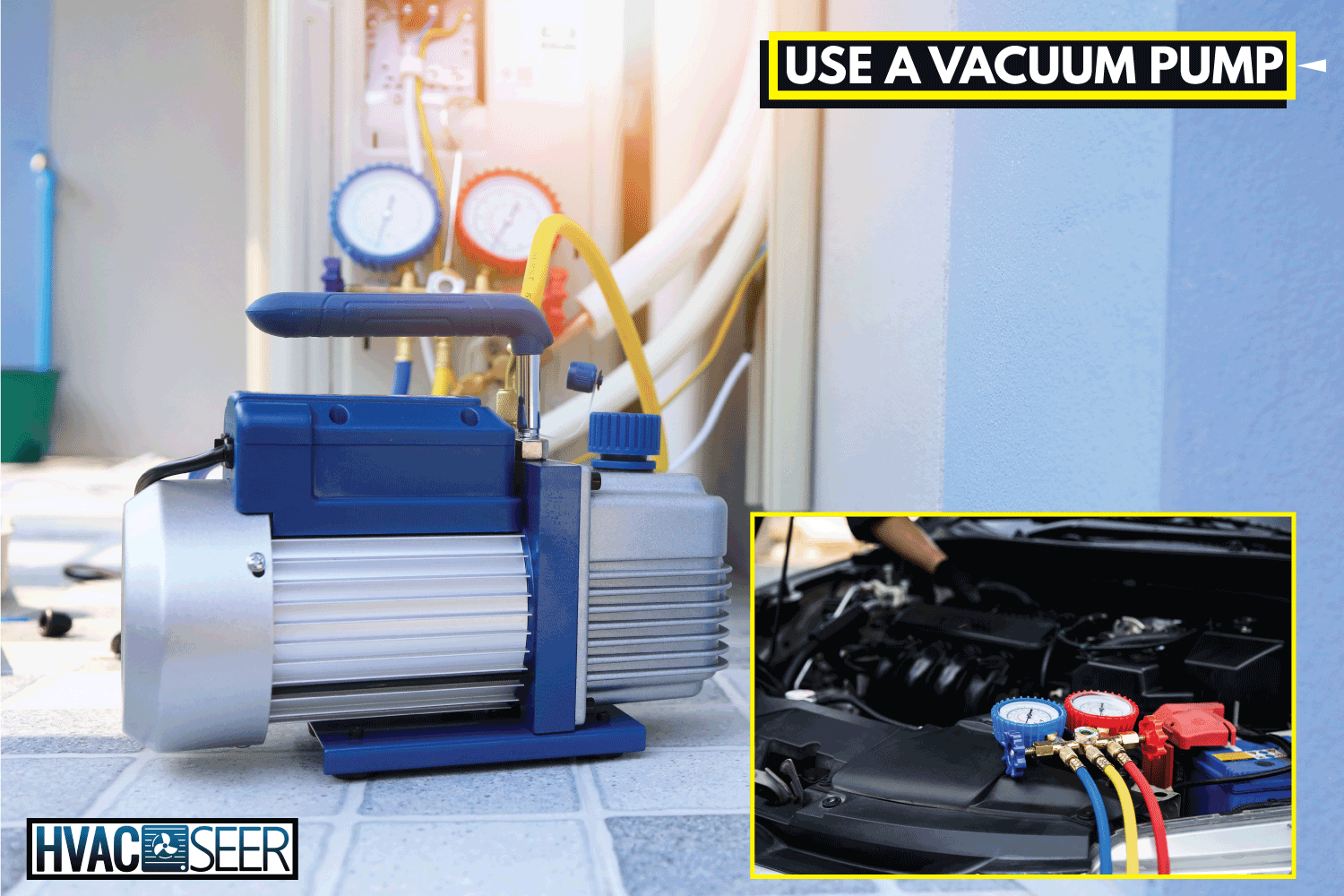
How To Use A Vacuum Pump?
When pulling a vacuum, it is best to leave it up to an HVAC professional. This is because they know best how to operate the little things when it comes to testing, repairing, and recharging the car air conditioner.
However, regarding doing simple repairs, even you can do it at home, if you know how to use a vacuum pump.
Check this vacuum pump on Amazon.
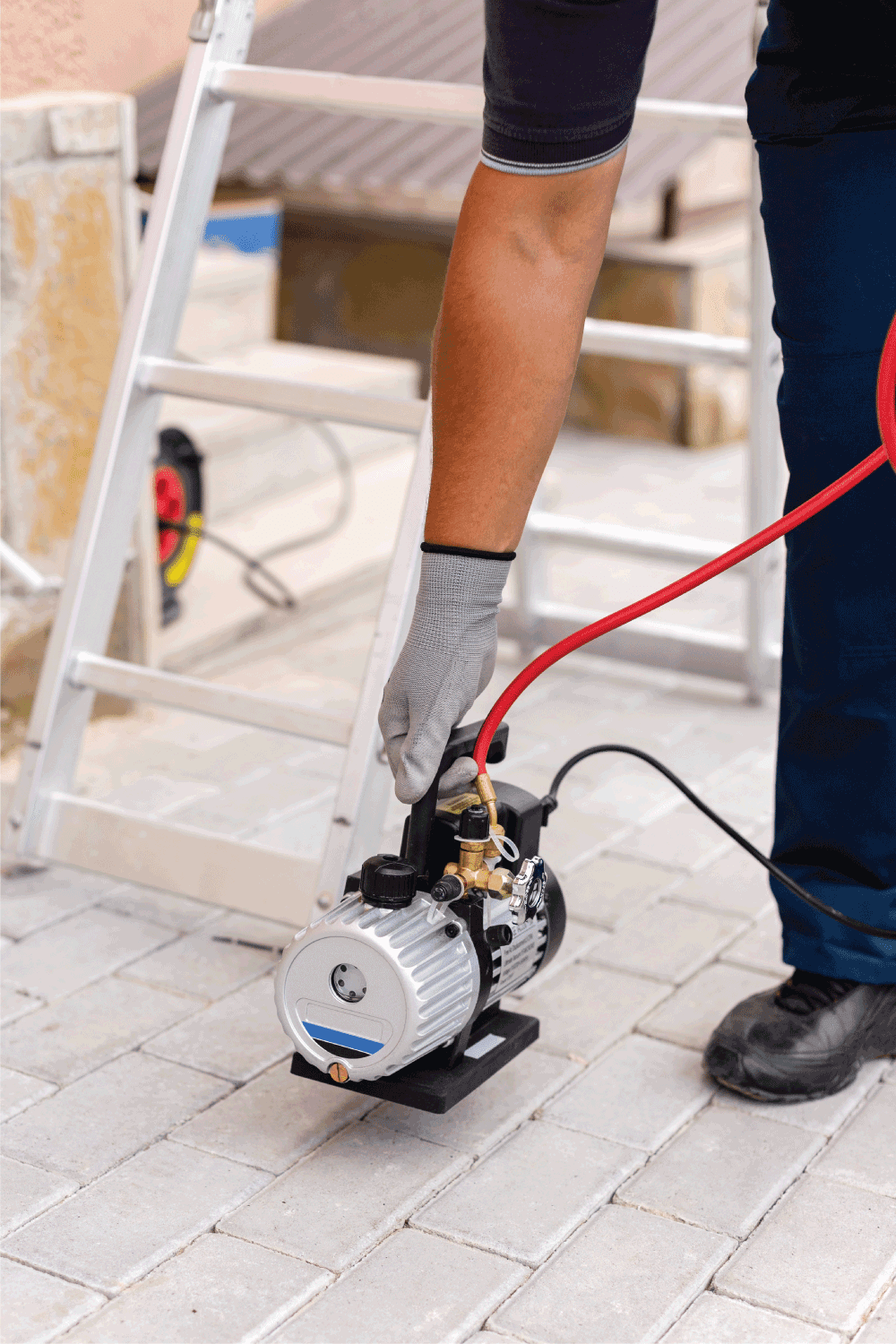
Setting Up The Vacuum Pump
First and foremost, wear protective gloves and safety goggles before attempting this project. This is to protect you from any unforeseeable accidents. Then, park your car somewhere flat before attempting to pull a vacuum.
Check whether the vacuum pump is full of clean oil. If it's not, be sure to fill it up until it reaches the fill line.
Only use oil meant for vacuum pumps. Failure to do so will lead to reduced performance and optimization of the vacuum pump.
Next, you will need to acquire a gauge set. It will connect to the AC system's pressure ports and the vacuum pump. Following that, you'll connect the low-pressure service port to the blue gauge. Then, connect the red hose and gauge to the high-pressure port.
An important tip to remember is physically, the high-pressure port is higher than the low-pressure port in your vehicle. And as for the yellow hose, it should connect the gauges to the vacuum pump.
Next, keep the valves on the gauges closed. To find out if there's any leakage, check the pressure reading. There should be little to no pressure reading showing up.
Check this vacuum pump oil on Amazon.
Pulling The Vacuum
Make sure to connect everything securely. Then, switch the vacuum pump on. If the weather is currently cold, first you'll want to open the intake ports, so the pump can reach the normal speed before closing them.
Once everything is in working order, move to the gauge valves and turn them open. This would allow the vacuum pump to pull out the trapped air and moisture from the system.
Afterward, let the vacuum pump run for at least 15 to 30 minutes to do its job completely. Also, check the user manual for both the vacuum pump, and the car's air conditioning system for any recommended duration.
Another way to know how long to keep the vacuum pump on is to check the microns. You would want your car's air conditioning system to have a measurement between 500 and 1,000 microns. The lower the value, the better.
Closing The Vacuum
After enough time passes, close the valve that is connected to the low-side gauge. Next, allow the vacuum pump to hold it in for a minimum of 15 minutes. If it's unable to do so, there may be faulty components inside the vacuum pump that need replacing.
Then, shut the vacuum pump off and wait for everything to settle and quiet down. Afterward, you can disconnect all the gauges from the system. The next step would be to either repair or recharge the air conditioning system.
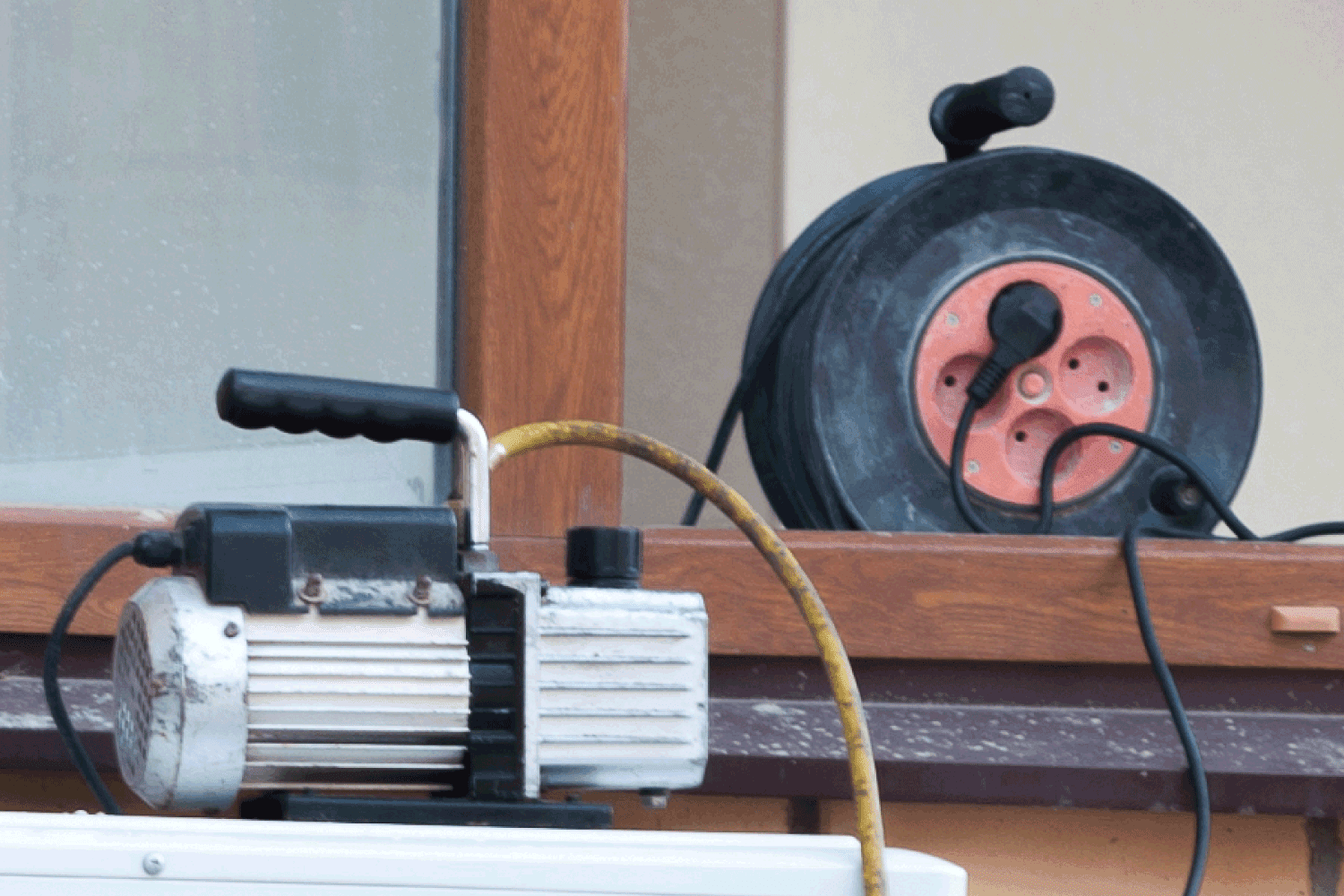
What Is The Purpose Of Pulling A Vacuum?
Besides wanting cool air to come out of the air conditioner, there are other reasons why it's important to pull a vacuum. And in this section, we will discuss each one in great detail.
Eliminate Unwanted Contaminants
Most of the time, it's unavoidable for unwanted contaminants to get inside your car's air conditioning system after a repair. Even more so if it involves replacing a faulty AC compressor or a condenser.
This is where the vacuum pump comes in. By pulling a vacuum, you not only get rid of the trapped air and moisture inside the system but these contaminants as well.
This is to ensure that your car's air conditioning system is free from foreign debris and particles that may hinder it from working efficiently.
Keeping The System Clean
We mentioned this repeatedly throughout the article but the vacuum pump's main role is to remove trapped air and moisture from inside the air conditioning system. This is to prevent increased levels of humidity inside the system.
If left unchecked, the air conditioning system may become a breeding ground for molds and mildew. When that happens, warm air flowing out from the air conditioner would be the least of your concerns.
So, when the scent of rotten eggs starts filling up the interior of your car's cabin, know that it's because the air conditioning system wasn't kept clean. When that happens, immediately take your car to an automobile shop.
Prevents System Breakdown
The most important reason you shouldn't ignore pulling a vacuum in your car's air conditioner is to prevent a system breakdown.
If you don't regularly pull a vacuum on your car's air conditioner, it would lead to a mechanical breakdown of various components. Some examples of these would be a broken compressor and faulty expansion valves.
Failing to pull a vacuum would also lead to lower efficiency, corrosion, and rust throughout the system, and ultimately, system failure.
Whenever installing a new air conditioning component, remember to pull a vacuum. Other than that, once every three years should suffice.
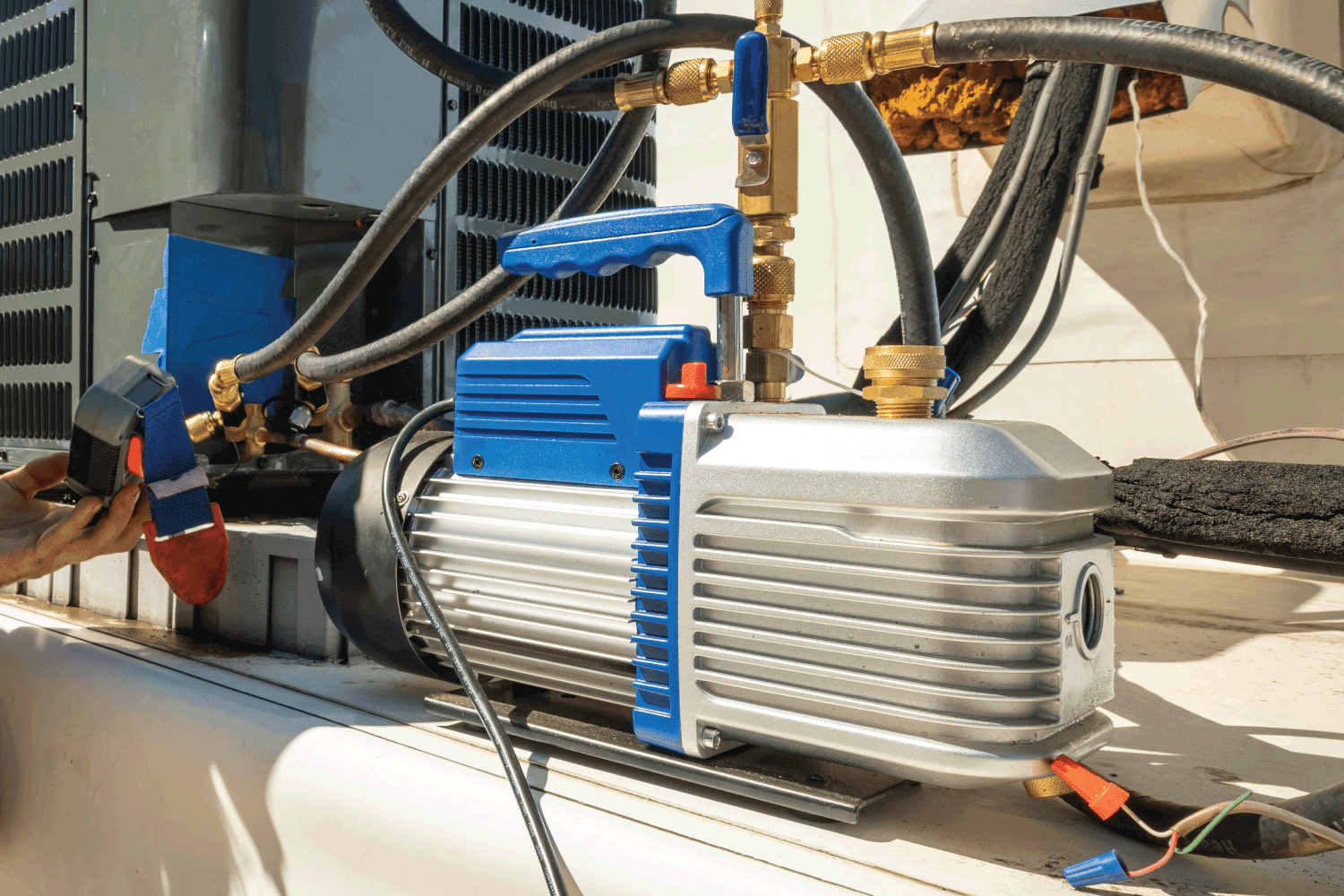
How Long Should You Pull A Vacuum?
On average, it would take at least 45 minutes to an hour to pull a vacuum on the car's air conditioning system. This number holds, provided that there are no leaks or problems along the way.
Take note as well that some steps require a fixed amount of time. So, be aware of those times when pulling a vacuum on your car's air conditioning system.
Does Pulling A Vacuum Remove Refrigerant?
When pulling a vacuum, even the car's refrigerant is not safe. However, only pull a vacuum after the refrigerant has been recycled.
Do not use the vacuum pump to remove the refrigerant from the air conditioning system. Or else, the vacuum pump would suffer greatly because they were not designed to handle such chemicals.
If you wish to have the refrigerant removed, the vacuum pump is not the way to go. Instead, use a refrigerant recovery machine for this task.
Does Vacuuming The AC Remove Oil
Vacuum pumps are designed to remove mainly moisture from the air conditioning system. They do this by reducing the refrigerant pressure, allowing it to turn into a gas state and expel it out of the system.
In short, they're incapable of removing oil from the car's compressor. So, you don't need to worry about oil filling up the inside of your vacuum pump and getting everywhere.
How Much Does It Cost To Vacuum And Recharge An AC?
The price varies based on several factors. First, the type of refrigerant needed to charge the car's air conditioning system properly. Second, the amount of that refrigerant needed is based on the car manufacturer's requirements.
Another thing that drives up the value is the labor. A quick evaluation of the car's air conditioning system won't cost you a lot. However, that figure rises upon detection of an issue.
Overall, it would cost you between $85 to $300. This includes the evaluation and recharge of the system, as well as the labor involved. That's a small price to pay to keep the performance of your car's air conditioning system at peak condition.
Check this car refrigerant on Amazon.
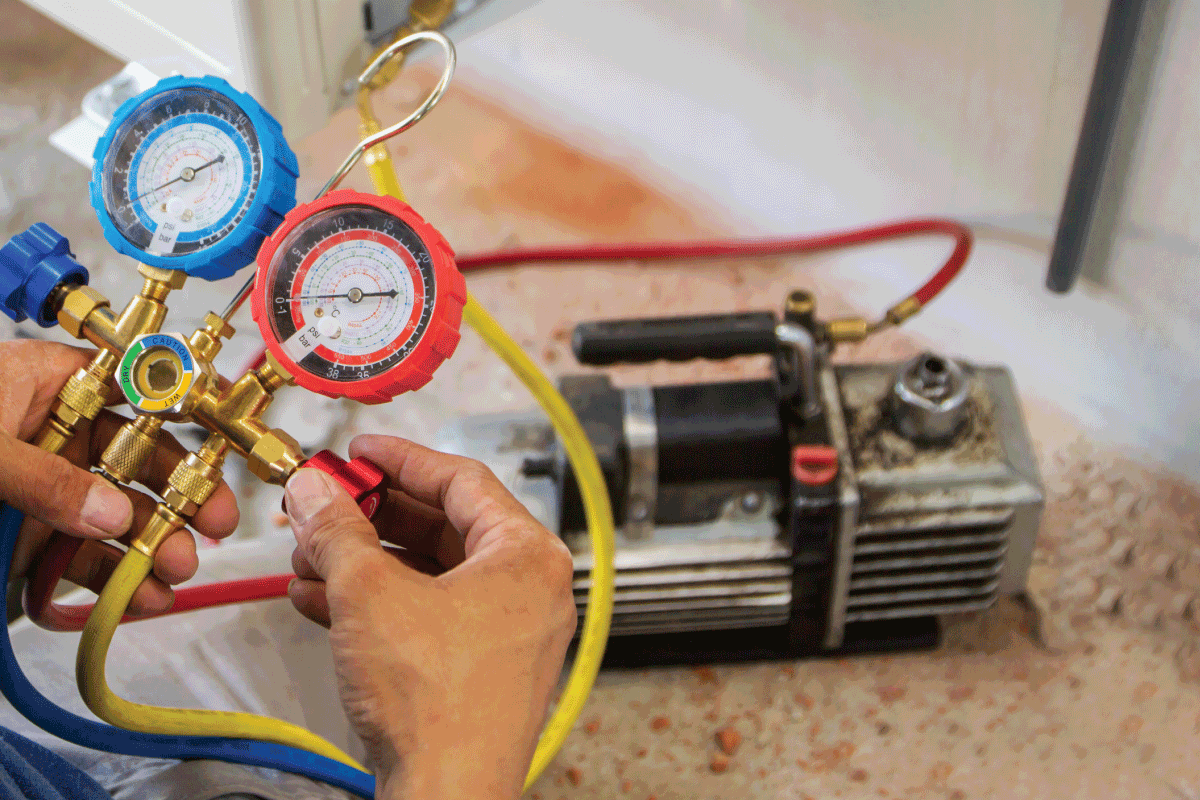
Closing Statement
To keep things short, there are only three steps that you must remember when pulling a vacuum on your car's air conditioner. However, each step requires due diligence and understanding of the process needed. If you find it to be too difficult, don't hesitate to call an HVAC professional to do the job for you.
If you enjoyed the information we divulged in this article, consider checking the links below. They provide lots of information about other problems related to the car's air conditioner.



